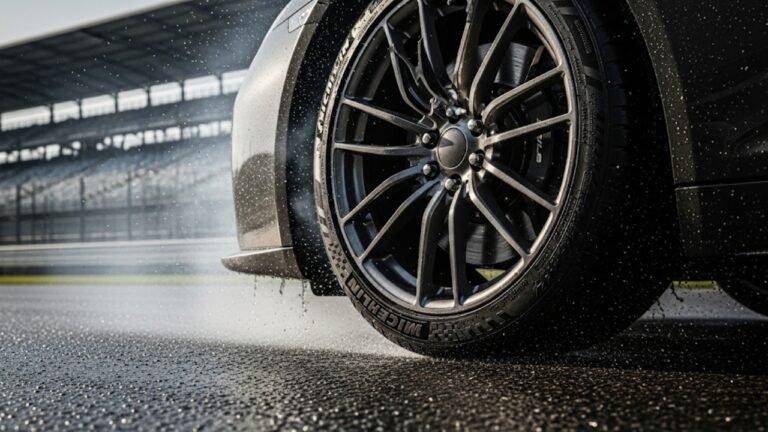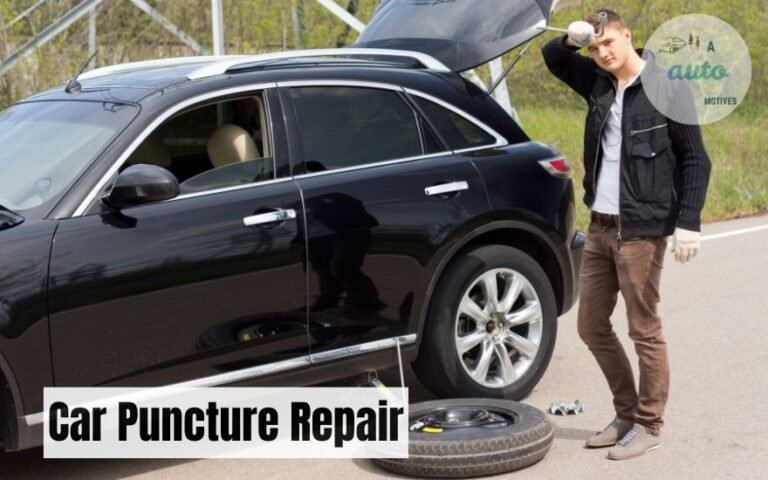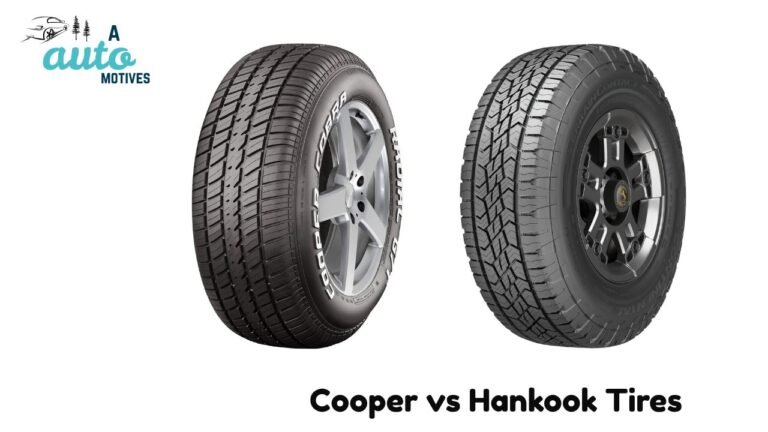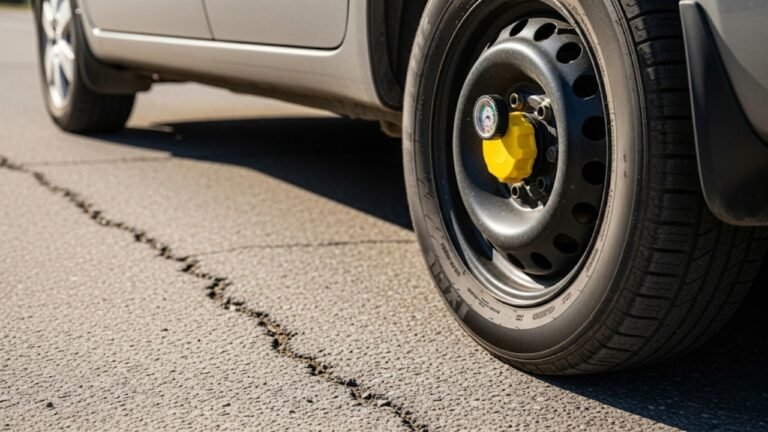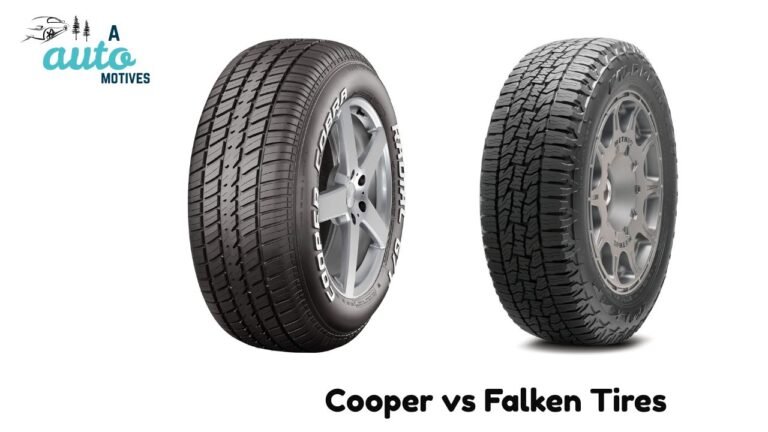How Do I Know If I Need a Tire Alignment?
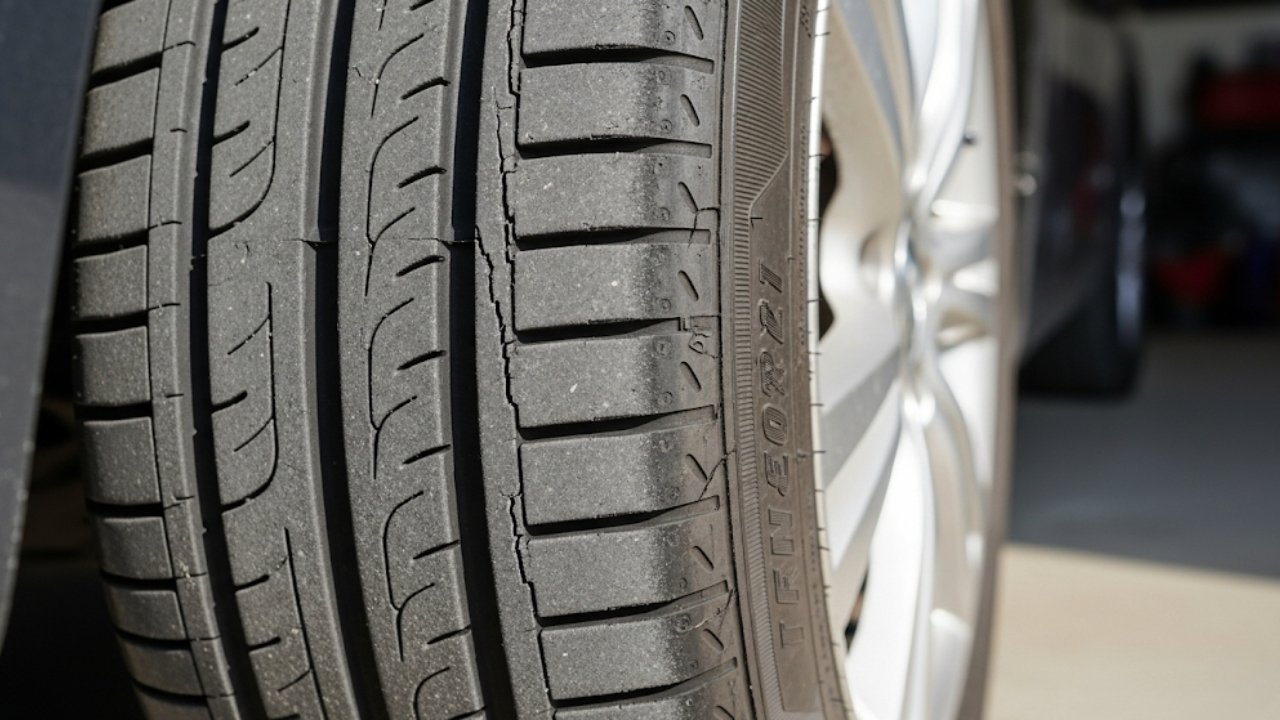
Have you ever driven down a straight road and noticed your car pulling to one side, even though your hands are firmly on the wheel? Or maybe your tires seem to be wearing out way too fast? I’ve been there. A few years ago, I ignored these signs, thinking it was “normal.” That mistake ended up costing me a set of nearly new tires.
You might be asking, “how do I know if I need a tire alignment?” That’s a great question—and the answer can save you money, time, and even help you drive safer. In this friendly yet deep-dive guide, we’ll explore all the subtle and obvious signs that your car might need an alignment. I’ll mix in real stories, expert tips, and simple language to help you make sense of everything.
Let’s break it down in a way that even your grandma could understand (and she probably drives better than you think).
What Is a Tire Alignment Anyway?
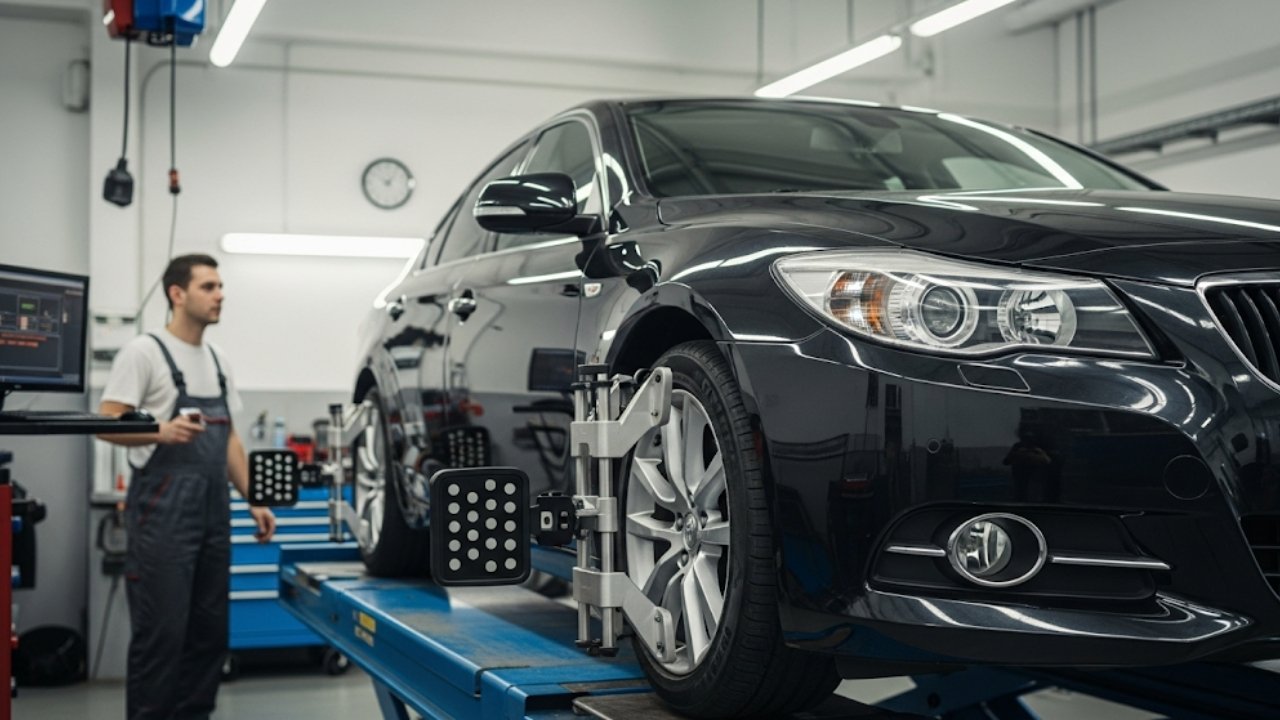
When your car is built, the wheels are aligned based on factory specs—think of it like a perfect balancing act. Over time, hitting potholes, bumping curbs, or just daily wear and tear can throw things off. That’s when the problems begin.
Here’s how alignment works:
| Angle Type | Meaning |
|---|---|
| Camber | Tilt of the tire inward or outward when viewed from the front |
| Toe | Angle of the tires turning in or out when viewed from above |
| Caster | Slope of the steering axis from the side view |
Each angle affects tire wear, handling, and safety. That’s why knowing if you need a tire alignment is more than just maintenance—it’s peace of mind.
Sign #1: Your Car Pulls to One Side
This is the most common red flag. Imagine you’re driving straight, but your car keeps veering left or right. You constantly have to correct the steering. It’s like walking a dog that won’t stop chasing squirrels.
This usually means your tires aren’t meeting the road evenly. It could be uneven toe or camber misalignment. Some people confuse this with low tire pressure, and yes, that’s a factor too. But if your tires are all properly inflated, it’s likely your tire alignment is off.
A quick test: Find an empty road, release the steering wheel slightly, and see if your car drifts. If it does, that’s your answer.
Sign #2: Uneven or Rapid Tire Wear
This one’s personal for me. I once had a tire that wore out in 3 months. When I took it in, the mechanic showed me the inner edge—it was completely bald, while the rest of the tire looked okay.
That’s the textbook symptom of misalignment.
Here’s a cheat sheet for what wear means:
-
Outer edge wear only: Too much positive camber
-
Inner edge wear: Too much negative camber
-
Feathering (like one side of the tread is higher): Incorrect toe setting
-
Cupping or scalloping: Could be misalignment, suspension issues, or both
Keep a tire tread depth gauge handy (they’re cheap) or just use the penny test. But check all around the tire, not just the middle.
Sign #3: Steering Wheel Off-Center or Vibrating
Ever noticed your steering wheel is crooked even though your car is driving straight? It’s a weird feeling—like your car has a mind of its own. This is another big clue that your tire alignment might be off.
In more severe cases, your steering wheel might even shake or vibrate at certain speeds. While that can also be due to unbalanced tires or worn suspension, it’s often a combo deal, and alignment plays a role.
Quick story: A friend of mine ignored his vibrating steering wheel. Six months later, he had to replace not only his tires but also some suspension parts—all because of an alignment issue that could’ve been fixed for under $100.
Sign #4: Squealing Tires on Normal Turns
If your tires sound like they’re screaming during every turn—even at low speeds—that’s not just dramatic, it’s a warning sign.
Squealing can mean your tires are fighting against the road due to incorrect toe or camber angles. That causes drag, which creates heat and sound.
Don’t ignore this sound. It’s like your tires trying to yell, “Hey! Something’s wrong here!”
Why Ignoring Tire Alignment Is a Costly Mistake
Here’s what misalignment can do over time:
-
Wear out your tires faster (which are expensive)
-
Stress your suspension and steering parts
-
Reduce fuel efficiency
-
Cause unsafe driving conditions
Would you believe that ignoring alignment can cut your tire’s life in half? That’s like buying a pair of new sneakers and only wearing one shoe until it’s useless.
Proper alignment saves you money and keeps your ride smooth.
Bullet Points: Quick Signs You Might Need a Tire Alignment
-
Your car pulls to the left or right
-
The steering wheel looks crooked
-
You feel vibrations through the wheel
-
Tires show uneven wear patterns
-
You hear tire squeals on regular turns
-
Fuel mileage has dropped unexpectedly
-
You recently hit a pothole or curb
If two or more of these are true, you likely need a tire alignment.
How Often Should You Get an Alignment?
This depends on your driving style, road conditions, and how old your car is. Here’s a general guideline:
| Driving Condition | Recommended Alignment Check |
|---|---|
| Mostly highway or city driving | Every 10,000–12,000 miles |
| Rough roads or frequent potholes | Every 6,000–8,000 miles |
| After hitting a curb or pothole | Immediately |
| After new tires or suspension | Immediately |
Even if everything feels fine, getting an alignment check once a year is a smart move. It’s like a wellness checkup for your car.
Sign #5: Your Car Feels “Loose” or Wanders
Have you ever felt like your car isn’t “planted” on the road? Like it floats or drifts slightly, even without steering? That feeling is often called “wandering,” and it’s not something you should get used to.
When your tire alignment is off, your steering loses some of its natural feedback and precision. It makes your car feel loose—like there’s a delay between turning the wheel and your car reacting.
That’s not only annoying, it’s dangerous—especially on highways or in rain.
What Happens During a Tire Alignment?
Getting an alignment is surprisingly fast and high-tech these days. The process usually involves:
-
Mounting your car on an alignment rack.
-
Using lasers or sensors to read wheel angles.
-
Adjusting camber, toe, and caster to factory specs.
-
Test driving the vehicle to confirm corrections.
Some shops even print out before-and-after reports. If you see those red bars turn green, you’ll know everything is back in balance.
Sign #6: Poor Fuel Economy for No Clear Reason
If you’re visiting the gas station more often but your driving habits haven’t changed, poor fuel efficiency might be whispering: “Check your alignment.”
When your tires aren’t aligned, they drag instead of roll smoothly. This means your engine has to work harder just to maintain speed. It’s like walking with your shoes pointed outward—uncomfortable and inefficient.
You might not notice the fuel dip immediately, but over months, it adds up. Even a 5% drop in MPG can cost you hundreds over the year, especially if you commute daily. Keeping your tire alignment in check ensures your car rolls effortlessly—and your wallet stays fuller.
Sign #7: You’ve Hit a Pothole or Curb Recently
Even one pothole can knock your alignment out of whack. I once hit a hidden pothole after a rainstorm, and my steering was never the same. Within a week, my car started pulling and the tires began wearing oddly.
Any sharp jolt—like bumping a curb or hitting a large bump at speed—can change your tire angles. Even if everything feels okay at first, it’s worth having an alignment check after such events. Sometimes, the damage is gradual and goes unnoticed until it becomes expensive.
When Should You Not Worry About Alignment?
There are some car quirks that aren’t caused by misalignment, and confusing the two could waste time and money.
-
Your car pulls because of uneven tire pressure: Always check and inflate tires to manufacturer specs first.
-
Steering is stiff or makes noise: This could be a suspension or power steering issue, not alignment.
-
Wheel vibration at high speeds: That’s usually tire balancing or bent rims.
That’s why a professional inspection is your best bet. They can diagnose accurately and avoid unnecessary repairs.
My Experience: A Lesson Learned the Hard Way
Let me be real. I used to ignore car maintenance—alignment included. One winter, I drove for months with a crooked steering wheel and uneven tire wear. I figured, “It still drives. No big deal.”
By spring, my front tires were bald on the inside, and my gas mileage had dropped by 10%. I finally got an alignment and tire replacement. The mechanic showed me the laser readouts—my toe angle was way off. The ride after alignment? Night and day. It was smoother, quieter, and felt like a new car.
Trust me: catch it early, and you’ll save big.
FAQs: Tire Alignment Questions Everyone Asks
1. How do I know if I need a tire alignment or just a tire rotation?
If your tires show even wear and your car pulls or drifts, it’s alignment. If they show uneven wear but no pulling, a rotation might help. A mechanic can tell for sure.
2. How much does a tire alignment cost?
Typically between $75 and $150. Some shops offer free checks or package deals with tire purchases.
3. Can I do tire alignment myself at home?
Not accurately. Alignment requires precise tools and measurements. You can inspect tire wear, but actual alignment should be done professionally.
4. Do new tires need alignment?
Yes. Installing new tires is a great time to do an alignment to protect your investment.
5. How long does a tire alignment take?
Usually between 30 minutes to an hour, depending on the shop and how off your vehicle is.
6. Does tire alignment affect braking?
Indirectly, yes. Misalignment can cause uneven tire wear, reducing grip. That affects how your car stops, especially on wet roads.
7. Is tire alignment part of regular maintenance?
Yes! It should be checked once a year or every 10,000–12,000 miles, even if there are no obvious symptoms.
8. Can I drive with bad alignment?
You can—but you shouldn’t. Over time, it will cost more in tires, fuel, and safety.
Simple Table Recap: Alignment Symptoms vs. Causes
| Symptom | Possible Cause |
|---|---|
| Car pulls to one side | Incorrect toe or camber |
| Uneven tire wear | Camber or toe misalignment |
| Crooked steering wheel | Out-of-spec alignment angles |
| Vibrating steering wheel | Toe misalignment, tire imbalance |
| Squealing in turns | Excessive camber or toe |
| Loose handling | Misalignment or worn suspension |
| Fuel efficiency drops | Tire drag due to bad alignment |
Pro Tip: Get a Lifetime Alignment Plan
Some auto shops offer a lifetime alignment package for around $200–250. This lets you bring your car in anytime for alignment checks or adjustments—forever. If you plan to keep your car for several years, this pays off fast.
Final Thoughts: Listen to Your Car
Your car speaks—but not with words. It talks through how it drives, feels, and sounds. Asking “how do I know if I need a tire alignment” shows you care not just about your car, but also your safety, your finances, and your peace of mind.
To recap:
-
Trust your gut. If something feels off, it probably is.
-
Don’t ignore small signs. They grow into expensive problems.
-
Get an annual alignment check—even if nothing feels wrong.
Think of alignment like going to the chiropractor. It’s not always urgent, but when it’s off, everything suffers. A quick, inexpensive fix can restore comfort, performance, and control.

